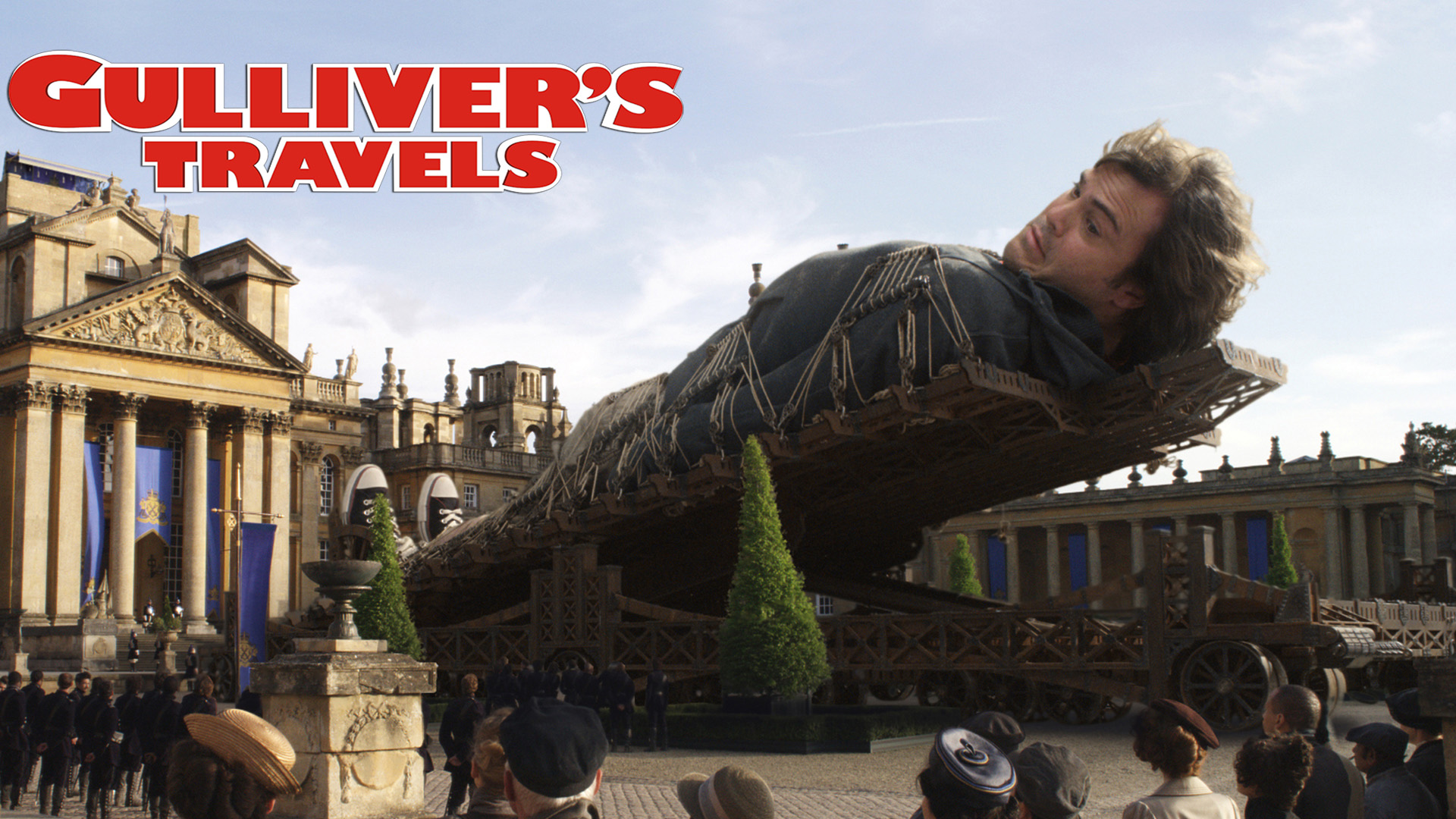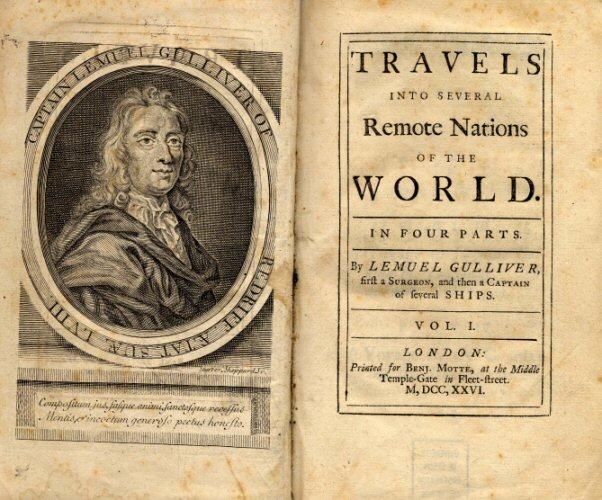
The plot
Book 1
Gulliver sails from Bristol, and after six months, is
shipwrecked somewhere in the South Pacifc. He is cast upon the shore of
‘Lilliput’, whose inhabitants, the ‘Lilliputians’, are only six inches tall.
After many amusing experiences, he manages to return to England.
Book 2
Gulliver sails for India, but fnds himself in
‘Brobdingnag’, a country Swift located in Alaska. Here the natives are giants
twelve times as tall as Gulliver. His size causes him many misadventures and he
fnally becomes the King’s pet, kept in a cage. One day Gulliver’s cage is
lifted up by a huge bird and dropped in the middle of the ocean. He is rescued
by a ship and returns to England.
Book 3
Gulliver’s ship is attacked by pirates
who set him adrift on a small boat. He fnds himself on the fying island of
‘Laputa’, whose inhabitants are absent-minded astronomers, philosophers and
scientists who carry out absurd experiments. The island drops Gulliver on Japan
and he manages to go back to England..
Book 4
Gulliver’s last voyage leads him to the island
inhabited by the ‘Houyhnhnms’, rational horses that rule over the ‘Yahoos’, a
vile species ofanimal resembling human beings. When the horses banish him, he
builds a canoe and leaves for England. Once back in civilisation, he joins his
wife and children but cannot stand their human smell. He therefore goes to live
in the stable, among the animals that remind him of the nobility of the
Houyhnhnms.
Gulliver’s travel in modern culture
Gulliver’s Travels is a 2010 American fantasy adventure comedy film directed by Rob Letterman, produced by John Davis and Gregory Goodman, written by Joe Stillman and Nicholas Stoller with music by Henry Jackman and very loosely based on Part One of the 18th-century novel of the same name by Jonathan Swift, though the film takes place in modern day. It stars Jack Black, Jason Segel, Emily Blunt, Amanda Peet, Billy Connolly, T. J. Miller, Chris O’Dowd, James Corden, and Catherine Tateand is distributed by 20th Century Fox. The film was theatrically released on December 25, 2010 in the US. The film earned $237.4 million on a $112 million budget . Gulliver’s Travels was released on DVD and Blu-ray Disc on April 19, 2011, by 20th Century Fox Home Entertainment.

Gulliver's Travel characters
If you want to know about Gullive’s Travel characters
Exctract from the book
If you want to read an extract from the book

Sources
Swift looked to the extensive literature of travel,
both real and maginary. The scientifc projects described in Book 3, on the
other hand, display an acquaintance with the work of the Royal Society.
Finally, there are recognisable elements of political allegory through
allusions to people and events in the England of Anne and George I. Throughout
the 17 The century the imaginary voyage had been used by French writers as a
vehicle for their theories. The traveler usually discovered some happy society
where men lived a simple, uncorrupted life, following their natural instincts
and the innate light of reason. From these utopias, the European man was seen
as the victim of civilisation. In addition, there are more general themes of
moral satire: man’s concern with unimportant matters and greed (Book 1), his
pride (Book 2), the representation of pure reason (Book 4), the absurdities and
evils of the various professions (Book 3).
